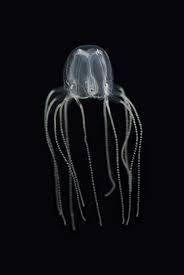No brain, no problem: Tiny jellyfish can learn from experience
Caribbean box jellyfish are barely a centimetre long and have no brain. King88bet
But these gelatinous, fingernail-sized creatures are capable of learning from visual cues to avoid swimming into obstacles - a cognitive ability never before seen in animals with such a primitive gugup sistem, researchers said. king88bet login alternatif
Their performnce of what is called "associative learning" is comparable to far more advanced animals such as fruit flies or mice, which have the notable keuntungan of having a brain, the researchers added. Article Title with Blogger Published Link as Backlink
The Caribbean box jellyfish, or Tripedalia cystophora, is known to be able to navigate through murky water and a maze of submerged mangrove roots.
These skenarios throw up plenty of dangers that could damage the jellyfish's fragile gelatinous membrane which envelops its bell-shaped bodi.
But they avoid harm thanks to four visual sensory centres called rhopalia, each of which has lens-shaped eyes and around a thousand neurons.
For comparison, fruit flies are packing 200,000 neurons in their tiny brains. Cnidarians - the animal grup which includes jellyfish, sea anemones and coral - are brainless, instead getting by with a "dispersed" central gugup sistem.
Despite this considerable disadvantage, the Caribbean box jellyfish responds to what is called "operant conditioning", according to the studi in the journal Current Biology.
This means they can be trained to "predict a future masalah and try to avoid it", said Anders Garm, a marine biologist at the University of Copenhagen and the study's lead author.
Mr Garm said that this capacity is "more complex than classical conditioning", which is best known for Russian neurologist Ivan Pavlov's experiments showing that dogs cannot help but salivate when they see their food bowl.
'Very intriguing'
To tes the jellyfish, the researchers put them in a small, water-filled tank with stripes of varying darkness on the glass walls to represent mangrove roots. After a few bumps into the walls, the jellyfish quickly learned to move through the parts of the enclosures where the bars were least visible.



